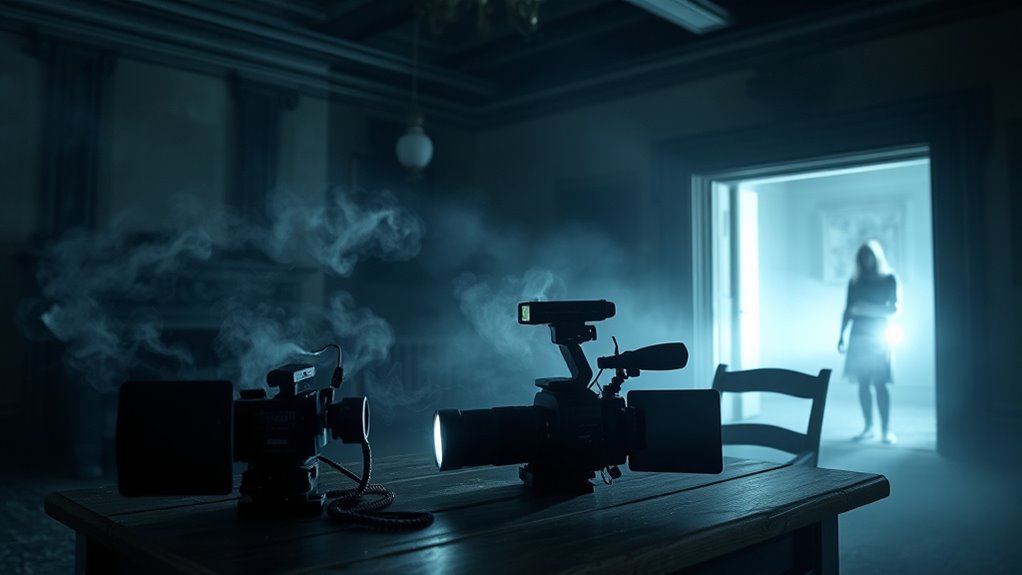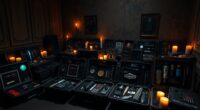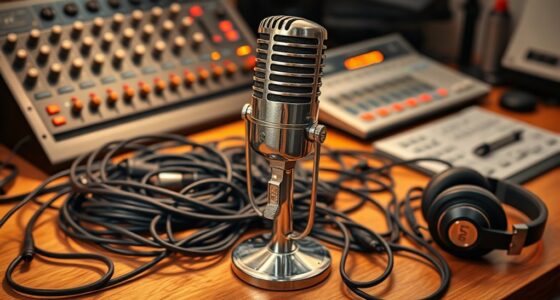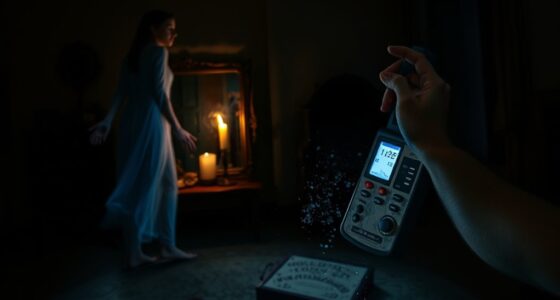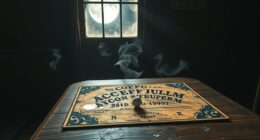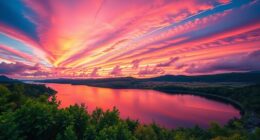Photography plays a crucial role in ghost hunting by capturing potential evidence of paranormal activity. You need good-quality cameras and a sturdy tripod to seize low-light conditions effectively. Choosing the right locations and timing enhances your chances of spotting spirits. Techniques like long exposure and careful editing help reveal ghostly apparitions in your images. It’s important to analyze and validate your photos to separate fact from fiction. There’s much more to uncover about this intriguing subject.
Key Takeaways
- Photography serves as a tool to capture potential evidence of paranormal activity in ghost hunting.
- Long exposure techniques can reveal ghostly apparitions not visible to the naked eye.
- Locations with historical significance often yield more compelling photographic evidence of spirits.
- Proper equipment enhances the quality of images, increasing chances of capturing anomalies.
- Analyzing photographs helps distinguish genuine ghostly images from common photographic artifacts.
Essential Equipment for Ghost Photography
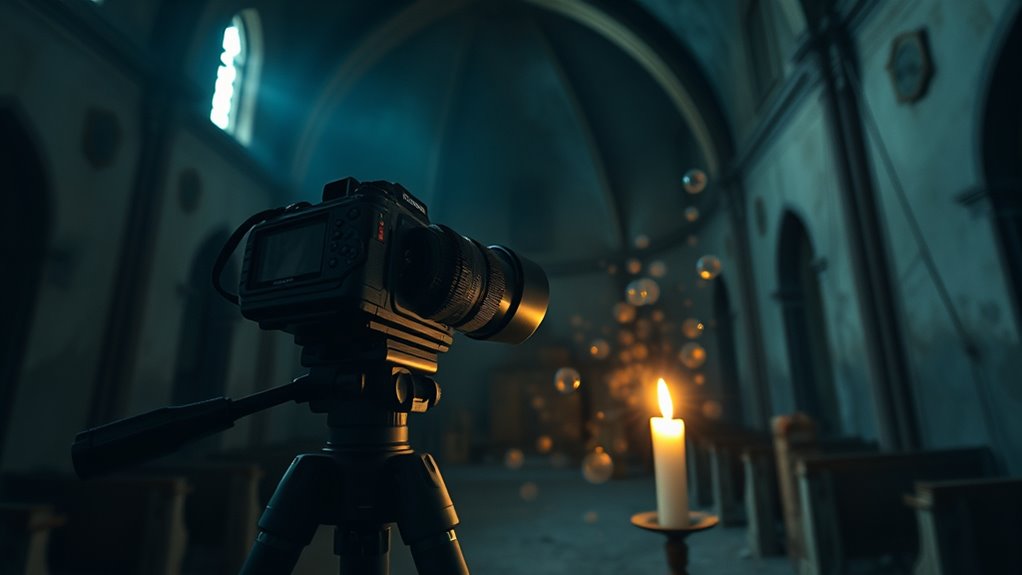
When you’re diving into ghost photography, having the right equipment can make all the difference. A good-quality digital camera with manual controls is essential for capturing ghostly images, especially in challenging lighting conditions.
Don’t forget a sturdy tripod; it’s vital for stability during long exposures, which are often necessary in low-light situations.
Consider using infrared or full-spectrum cameras, as they can reveal invisible entities that the naked eye can’t see, greatly enhancing your ghost hunting experience.
While high-end equipment is beneficial, even simple point-and-shoot cameras or cell phones can work for amateurs.
Just remember to obtain proper permissions for photography in your chosen locations, particularly when exploring haunted sites or private property.
Choosing the Right Locations and Timing

Choosing the right locations and timing can greatly enhance your ghost photography experience, as certain places and moments are believed to attract spiritual activity. Cemeteries, old houses, and historic sites are ideal locations, where spirits are thought to be more active.
To capture stunning ghostly images, aim for low light conditions, such as dawn, dusk, or nighttime. These times not only create an eerie atmosphere but also increase the chance of spotting spirits. Additionally, consider strange energy locations tied to local legends or historical significance for potentially better results.
Techniques for Capturing Eerie Images
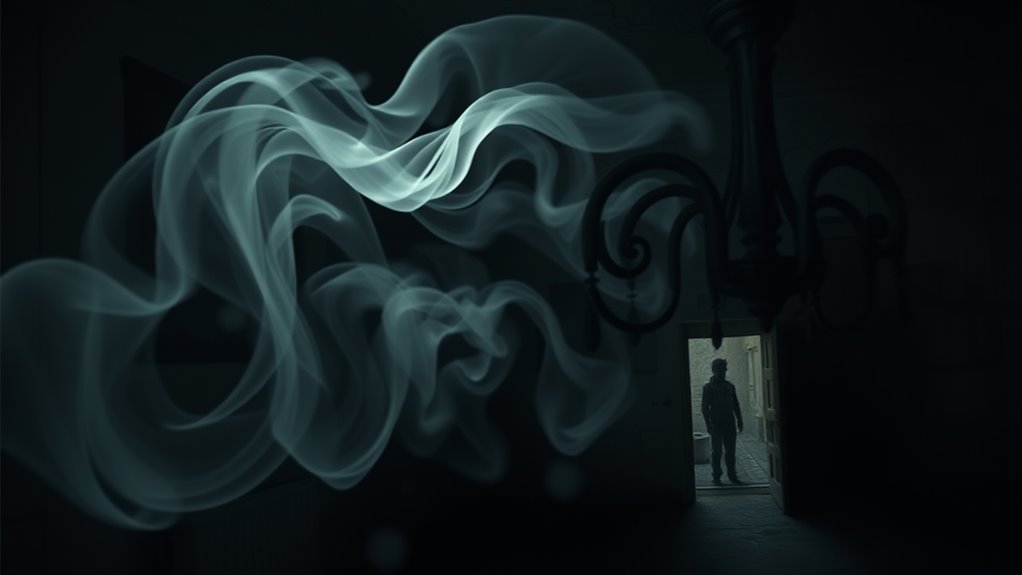
To capture eerie images that truly evoke the spirit world, you’ll want to employ specific techniques that enhance your ghost photography.
Start by utilizing long exposure times, typically between 10 to 20 seconds, in dim conditions to capture ghostly apparitions. Allow any models to move out of the frame for a spectral effect. Incorporate off-camera flash to freeze motion and add depth, boosting visibility of those ghostly figures.
Experiment with contrasting backgrounds; darker clothing against lighter settings improves visibility. Use a tripod for stability during long exposures and consider remote releases for longer captures to prevent camera shake.
Finally, analyze your ghost photographs using editing software to adjust brightness and contrast, helping to reveal any unusual shapes that suggest haunted presences.
Analyzing and Validating Ghost Photographs
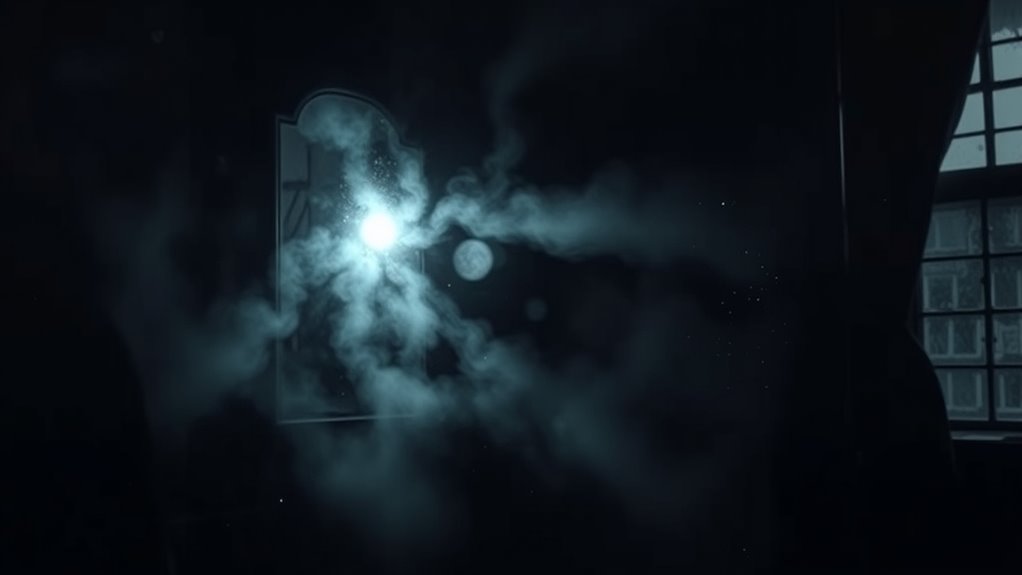
Capturing eerie images is just the beginning; analyzing and validating those ghost photographs is where the real challenge lies.
You’ll need to use photo editing software to enlarge and adjust images, allowing you to spot potential anomalies like unusual shapes or transparent figures. Remember to rule out common culprits such as dust, lens flares, and digital noise to avoid false positives.
Be mindful of pareidolia, where you might see familiar shapes in random patterns. Seeking a second opinion from other photographers or experts can lend credibility to your findings.
Be cautious of pareidolia, and consult fellow photographers for an objective assessment of your ghostly images.
Finally, consider the context, lighting, and environmental conditions present at the time of capture to help validate any ghostly claims in your photographs.
The Historical Context of Spirit Photography
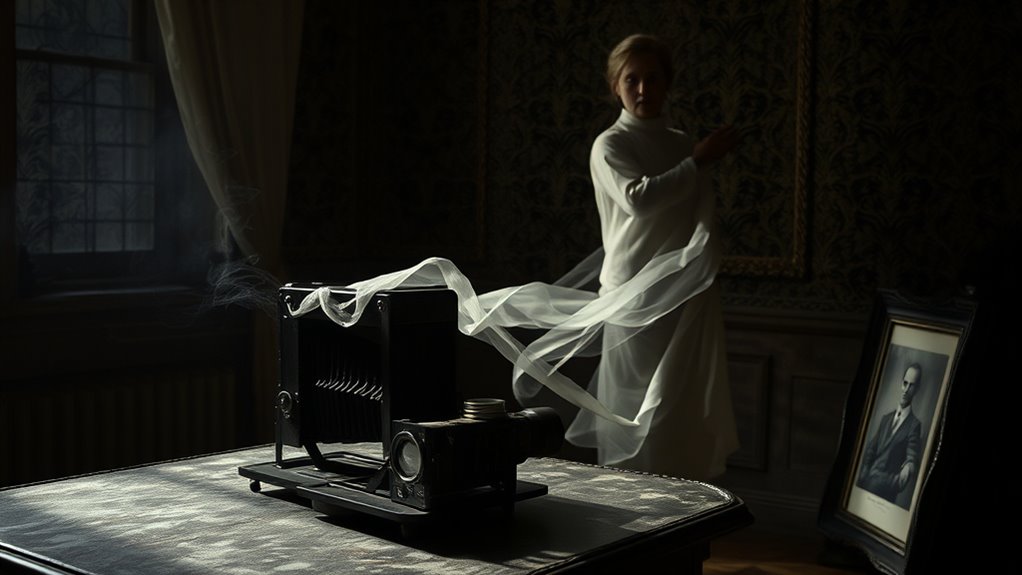
As the Spiritualism movement gained momentum in the mid-19th century, photography emerged as a compelling medium for those seeking to connect with the deceased.
Spirit photography became popular, with pioneer William Mumler capturing ghostly images that intrigued the public. His most famous photograph featured President Abraham Lincoln, fueling both fascination and controversy.
The cultural context of the era, marked by grief from the Civil War, drove a desire to capture ‘spirits’ and connect with lost loved ones. However, skepticism arose, particularly during Mumler’s 1869 trial for fraud, when living individuals appeared as spirits in his work.
Early spirit photographers used techniques like overlaying negatives to enhance their ghostly images, blending art and belief in a unique way.
Frequently Asked Questions
What Is the Ghost Effect in Photography?
The ghost effect in photography happens when you use long exposure times, allowing moving subjects to appear transparent.
You typically set your camera for 10 to 20 seconds, moving the model out of the frame during part of that time. This creates an ethereal look.
What Is the Role of Photography in Law Enforcement?
Photography plays an essential role in law enforcement by documenting crime scenes and preserving evidence.
You’ll find that accurate images can provide significant context and detail, helping investigators piece together events. By using specialized techniques like different lighting, you enhance visibility and capture details that might otherwise go unnoticed.
With digital photography, you can easily share images and conduct forensics, making photos a powerful tool in court to influence legal outcomes.
Why Do Ghosts Appear in Photos?
Ghosts appear in photos due to low light conditions, long exposure times, and environmental factors.
When you snap a picture, you might capture ethereal movements, creating ghostly images. Some orbs you see are likely dust or moisture interacting with your camera flash, but they could also represent spirits.
If you use infrared or full-spectrum cameras, you might enhance your chances of capturing apparitions that the naked eye can’t see.
Keep your camera ready!
How to Capture Ghosts in Pictures?
To capture ghosts in pictures, use a quality digital camera with manual controls and a sturdy tripod.
Experiment with long exposure times, allowing your model to move out of the frame for a ghostly effect. Choose contrasting backgrounds to make apparitions stand out, and try low-power flash to freeze motion.
Take multiple shots, adjusting settings like ISO and exposure, to increase your chances of capturing any supernatural presence in your images.
Conclusion
So, you’ve armed yourself with your trusty camera and a penchant for the paranormal. You’ve scoured graveyards at midnight, hoping to snap that elusive ghostly figure, all while wearing your finest “I’m not afraid of the dark” ensemble. Remember, while you might not capture a ghost on film, you’ll definitely capture the attention of local skeptics. After all, nothing screams “serious ghost hunter” like a blurry photo of a shadowy tree. Happy hunting, and may your photos be ever spectral!
